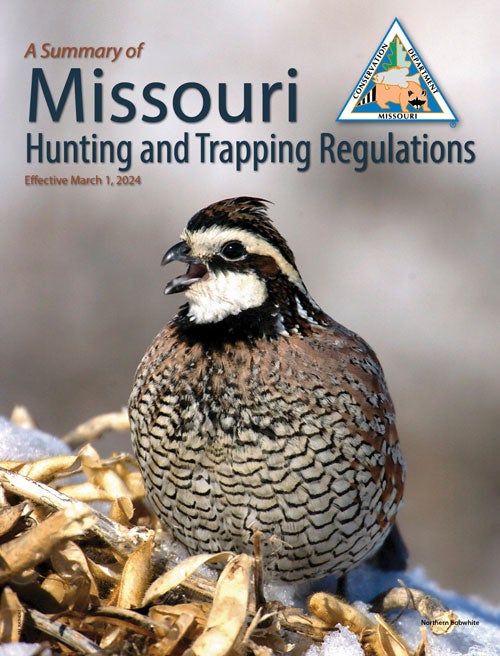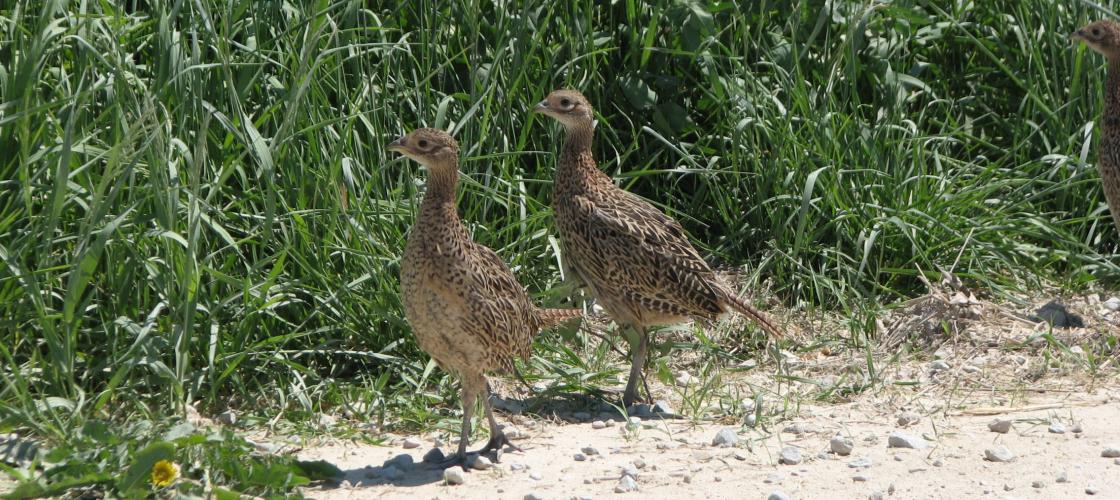
Participate in the annual pheasant and quail brood survey to help MDC gain information about pheasant and quail hatch success and assess the state’s pheasant and quail populations.
MDC staff and interested members of the public record observations of all wild pheasants and quail they see from June 1 through Oct. 31.
These observations across the state allow MDC to track trends in population numbers for these species and are recorded by county and summarized statewide and by region.
Survey instructions
- Only record observations of pheasant or quail seen from June 1 through Oct. 31.
- Choose species (pheasant or quail) to begin recording an observation.
- Record all pheasant or quail seen, including adult males, adult females, chicks, and those that you cannot identify as male or female (unknown sex).
Example: An observer sees two adult quail and six chicks but could not identify if the adults were male or female. The observer submits an observation where the number of adults of unknown sex is “2” and the number of chicks is “6.”
- Fill out one observation form for each individual observation of a group of either pheasants or quail.
Example: An observer sees two adult pheasants during the morning of June 10 , then sees a hen pheasant with four chicks later that day. The observer submits the first observation of “2” adult pheasants, opens a new form, and submits the second observation of “1” hen pheasant with “4” chicks.
- Observations of the same group of pheasants or quail can be submitted more than once (i.e., an observer sees the same group of pheasants or quail multiple days in a row); however, select “Yes” to answer the “Have you seen this group of birds before?” question during repeat submissions.
Example 1: An observer sees one adult female quail and three chicks in their backyard for the first time on July 5. The observer submits this observation and selects “No” to answer the “Have you seen this group of birds before?” question. The observer sees this same group of one female adult quail and three chicks return to their yard the next day, July 6. The observer submits this observation and selects “Yes” to answer the “Have you seen this group of birds before?” question.
Example 2: An observer sees a group of two adult male quail on Aug. 15. The observer previously submitted an observation of these two adult male quail on Aug. 13. The observer submits the observation of “2" adult male quail on Aug. 15 and select “Yes” to answer the “Have you seen this group of birds before?” question.
As a cooperator, you will receive a reminder email that the survey is about to begin and a summary report at the end of each survey. You can also receive a copy of your submitted observations.
Submit observations of pheasants and quail from June 1 through Oct. 31.
You can submit observations in a web browser or on a smart device using a free app called ArcGIS Survey123.
Title
Submitting observations using the Survey123 app
You can submit observations in a web browser or on a smart device using a free app called ArcGIS Survey123. To use Survey123, go to this link to download the app to your smart device. After your first submission, an icon will be saved in the app to streamline further submissions.
After the app downloads, go to the same link from your smart device and choose "Open in the Survey123 field app." For the survey to work, the app does not need access to your photos or camera or access to your device’s location.
In the ArcGIS Survey123 app, click “Continue without signing in” to access the survey. Enter your observations, click the checkmark, then, if you’re online, click “Send now” to submit them or “Save in Outbox” to send them later when you have internet connectivity.
For your next submission, an icon will be saved in the app to streamline submissions. Click on the app, choose “Continue without signing in,” click on the “Pheasant and Quail Brood Survey” icon, then choose “Collect” at the bottom of the screen. Proceed as before to submit your observations.
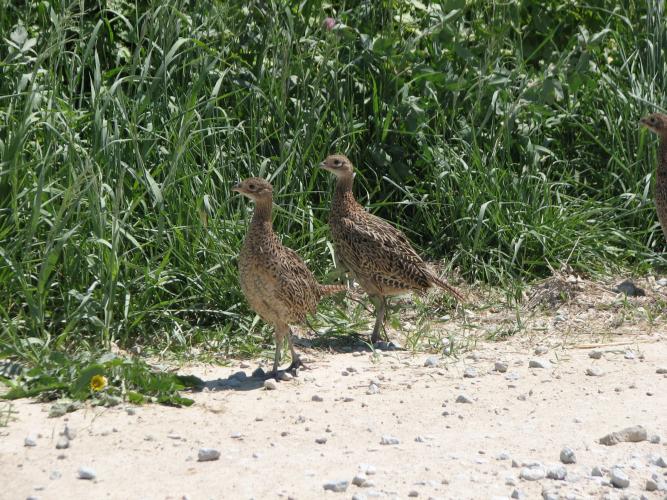

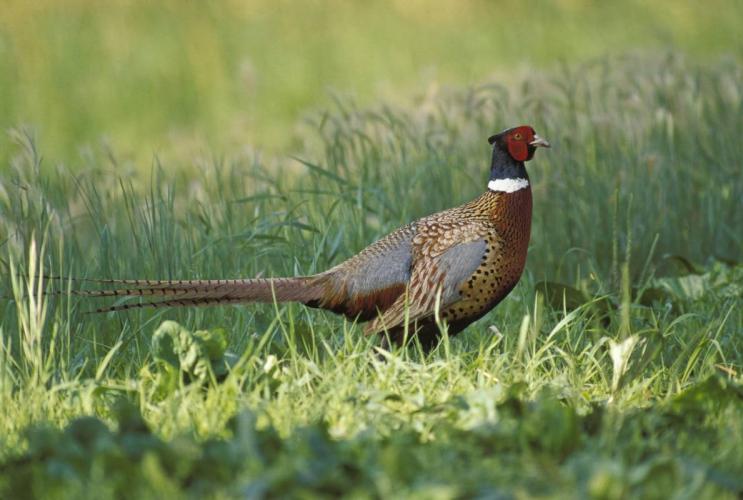
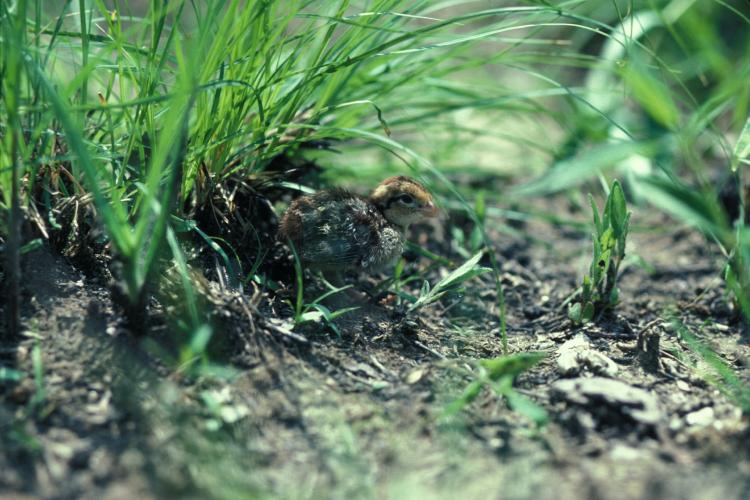
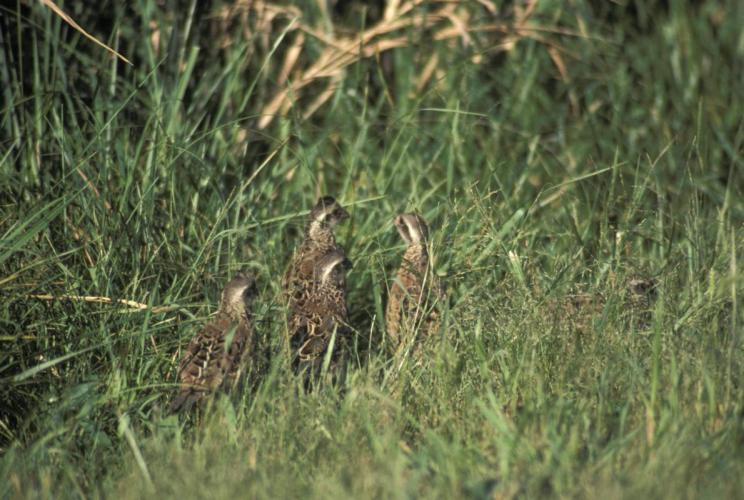
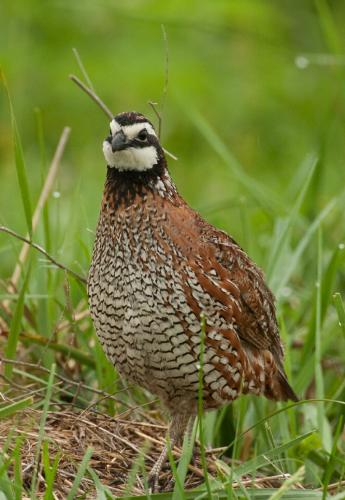
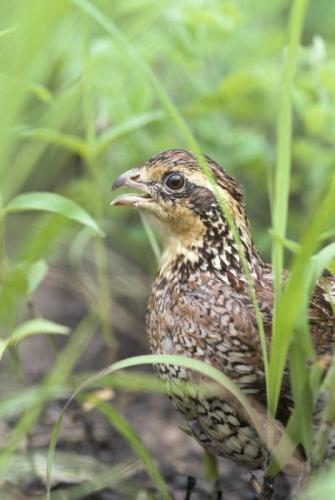







Ring-necked pheasants
- Male ring-necked pheasants have red around their eyes, iridescent green necks with a bright white ring, and coppery bodies with long tails with black barring.
- Female ring-necked pheasants are duller in color than males and are brown with black marks, especially on the back and wings. Their tails are long but shorter than males’ tails.
- Chicks are lighter brown in color with dark spots on their backs and wings. Chicks are mobile as soon as they hatch and are generally seen with the female.
Bobwhite quail
- Bobwhite quail are patterned in shades of brown, reddish-brown, tan, and black.
- The heads of bobwhite males are boldly patterned in black and white.
- The heads of bobwhite females are patterned in shades of brown and yellowish-tan.
- Chicks are patterned from light tan to dark brown. It is difficult to differentiate sex until the chicks are about 8 weeks old. Newly hatched chicks are not much larger than bumblebees but can forage for themselves soon after hatching. Chicks cannot fly for the first two weeks after hatching. At 12 to 16 weeks, chicks are about the size of an adult bobwhite.






















